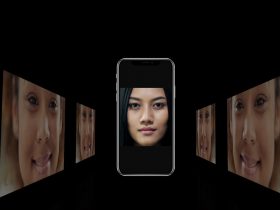Would it be more fun to play with multiple virtual assistants from a single device or should it be a strictly one person, one assistant relationship?
Amazon is starting the Voice Interoperability Initiative, a move that will hopefully enable users to access several virtual assistants from a single device. The deal – headed by Amazon – has Amazon’s own Alexa already on board together with Microsoft’s Cortana, Salesforce’s Einstein, and about 25 others.
Google is not quite there yet
The three big boys not yet signed onto the deal are the Google Assistant, Apple’s Siri, and Samsung’s Bixby. According to reports, Google hasn’t actually said no. They were just approached by Amazon days before the announcement went public, giving them insufficient time to evaluate whether or not they should join the project. So maybe this could be called a tentative no.If you think about it, these three are big in mobile devices – something that Amazon is not.
Beyond those three “outies,” the “in” list also includes Baidu, BMW, Bose, Cerence, ecobee, Free, Harman, Microsoft, Orange, Salesforce, SFR, Sonos, Sound United, Sony Audio Group, Spotify and Tencent.
Let’s talk and spend money
The Initiative wants to, according to the press release, improve customer choice by enabling people to use multiple, inter-operable voice services on a single device. On one hand, customers can access multiple voice services by simply saying the corresponding wake word and on the other hand, solutions providers will work on the hardware and reference solutions needed to support multiple wake-word engine.
The initiative distilled its various objectives into four major goals:
- Develop voice services that can work seamlessly with others
- Build devices with multiple, simultaneous wake words
- Release technologies that make integration easier
- Accelerate machine learning and conversational AI research
Or, in more understandable English: Help people say less, their device technology to understand more, and – and most importantly – use more voice services.
Enhancing user privacy – especially when a device might respond to multiple wake words – is also included in these goals. That’s critical as the major players have been caught recently having real people listening in on users , albeit with the aim of improving language identification and processing skills.
What is the market division for virtual assistants?
The market for virtual assistants is a mix, with significant divisions by device. Microsoft has released a study of the overall market which gives their Cortana a 19% share, Google’s and Apple’s digital assistants a joint 36%, and Amazon’s Alexa with 25%. Alexa is clearly in the numerical lead with smart speakers. However, there are a lot fewer smart speakers around than smartphones, which usually incorporate Google Assistant or Apple’s Siri. Not visible in this report were the smaller, more special-purpose virtual assistants with Salesforce’s CRM or perhaps incorporated into your car.
And regardless of the particular developer, there is a clear desire for people to spend more time with their virtual assistant. The big companies also have different objectives for their virtual assistants: Amazon would like people to buy more stuff, Google would like to sell and serve more advertisements, and Microsoft simply wants to remain in your computer.
Relationships and technology matter with virtual assistants
Relationships matter when it comes to figuring out these alliances. Walmart (not mentioned in the Initiative) recently rolled out its Walmart Voice Order with the help of the Google Assistant. After all, Amazon has its Whole Foods grocery arm and AmazonFresh so there is really no reason for Walmart to try and get closer ties. Does Google really want to share ideas or data with Amazon?
But perhaps the biggest results of this agreement won’t be at the end user level, but inside our devices when a stronger squad of virtual assistants gain the capability to listen and respond more quickly to our spoken work.














